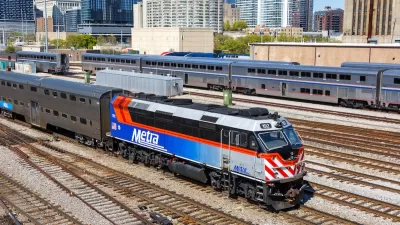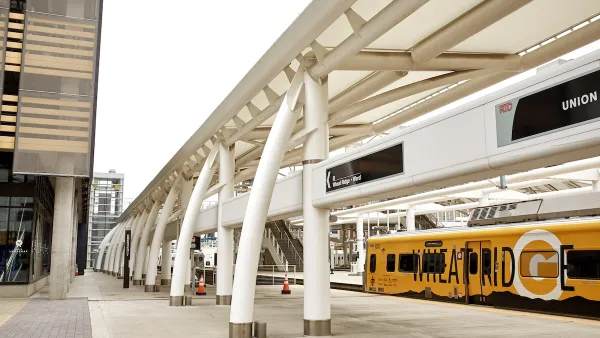This piece from The Nation looks at the prospect of transit in America, what a renewed nationwide system could accomplish, and what it would take to achieve politically.
"Trains, trolleys and buses are a far more energy efficient way of moving people than cars. The greenest jobs of all may be laying track for suburban commuter rail or driving trains along those tracks."
"Investing in mass transit would benefit not just the environment but also poor people, many of whom can't afford cars, don't drive and so have been shut out of the new economy, with its service sector employment increasingly available only in suburban office parks."
"The greenest way to lift the country out of a deepening recession would be to put people to work building mass-transit infrastructure, which could, in turn, ease the flow of goods and services, help generate economic growth and open economic opportunities to the disadvantaged. With a new president from Chicago and a House Speaker from San Francisco, the time seems ripe for Democrats to take advantage of the dual opportunities this year presents to alter America's transportation infrastructure radically: the upcoming stimulus spending bill and the Surface Transportation Reauthorization, due for renewal by September."
FULL STORY: Ticket to Ride

Planetizen Federal Action Tracker
A weekly monitor of how Trump’s orders and actions are impacting planners and planning in America.

Restaurant Patios Were a Pandemic Win — Why Were They so Hard to Keep?
Social distancing requirements and changes in travel patterns prompted cities to pilot new uses for street and sidewalk space. Then it got complicated.

Maui's Vacation Rental Debate Turns Ugly
Verbal attacks, misinformation campaigns and fistfights plague a high-stakes debate to convert thousands of vacation rentals into long-term housing.

In California Battle of Housing vs. Environment, Housing Just Won
A new state law significantly limits the power of CEQA, an environmental review law that served as a powerful tool for blocking new development.

Boulder Eliminates Parking Minimums Citywide
Officials estimate the cost of building a single underground parking space at up to $100,000.

Orange County, Florida Adopts Largest US “Sprawl Repair” Code
The ‘Orange Code’ seeks to rectify decades of sprawl-inducing, car-oriented development.
Urban Design for Planners 1: Software Tools
This six-course series explores essential urban design concepts using open source software and equips planners with the tools they need to participate fully in the urban design process.
Planning for Universal Design
Learn the tools for implementing Universal Design in planning regulations.
Heyer Gruel & Associates PA
JM Goldson LLC
Custer County Colorado
City of Camden Redevelopment Agency
City of Astoria
Transportation Research & Education Center (TREC) at Portland State University
Camden Redevelopment Agency
City of Claremont
Municipality of Princeton (NJ)





























